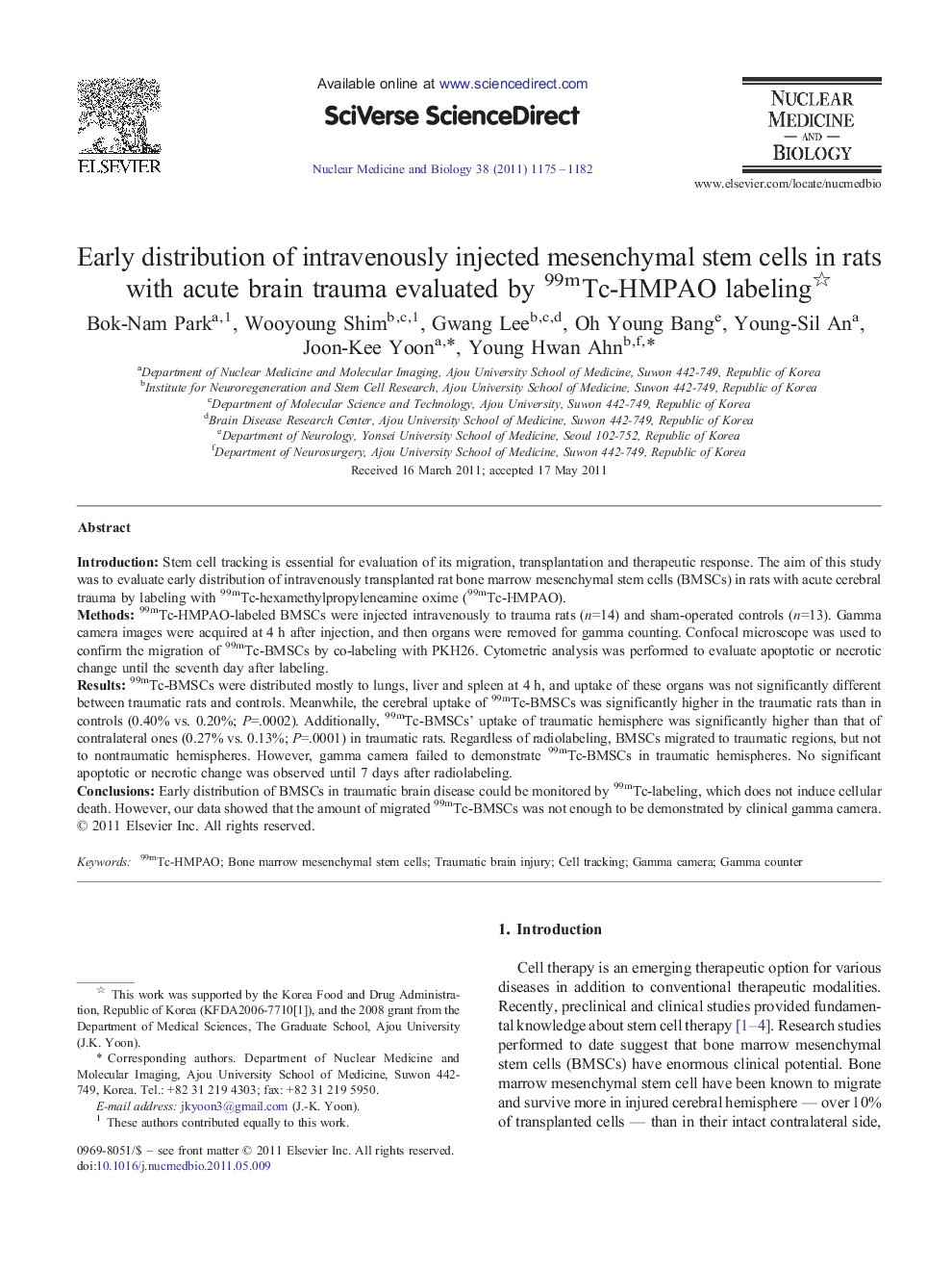| Article ID | Journal | Published Year | Pages | File Type |
|---|---|---|---|---|
| 2153853 | Nuclear Medicine and Biology | 2011 | 8 Pages |
IntroductionStem cell tracking is essential for evaluation of its migration, transplantation and therapeutic response. The aim of this study was to evaluate early distribution of intravenously transplanted rat bone marrow mesenchymal stem cells (BMSCs) in rats with acute cerebral trauma by labeling with 99mTc-hexamethylpropyleneamine oxime (99mTc-HMPAO).Methods99mTc-HMPAO-labeled BMSCs were injected intravenously to trauma rats (n=14) and sham-operated controls (n=13). Gamma camera images were acquired at 4 h after injection, and then organs were removed for gamma counting. Confocal microscope was used to confirm the migration of 99mTc-BMSCs by co-labeling with PKH26. Cytometric analysis was performed to evaluate apoptotic or necrotic change until the seventh day after labeling.Results99mTc-BMSCs were distributed mostly to lungs, liver and spleen at 4 h, and uptake of these organs was not significantly different between traumatic rats and controls. Meanwhile, the cerebral uptake of 99mTc-BMSCs was significantly higher in the traumatic rats than in controls (0.40% vs. 0.20%; P=.0002). Additionally, 99mTc-BMSCs' uptake of traumatic hemisphere was significantly higher than that of contralateral ones (0.27% vs. 0.13%; P=.0001) in traumatic rats. Regardless of radiolabeling, BMSCs migrated to traumatic regions, but not to nontraumatic hemispheres. However, gamma camera failed to demonstrate 99mTc-BMSCs in traumatic hemispheres. No significant apoptotic or necrotic change was observed until 7 days after radiolabeling.ConclusionsEarly distribution of BMSCs in traumatic brain disease could be monitored by 99mTc-labeling, which does not induce cellular death. However, our data showed that the amount of migrated 99mTc-BMSCs was not enough to be demonstrated by clinical gamma camera.
